Abstract
Kline, Leo (University of California, Berkeley), L. Pine, and H. A. Barker. Metabolic role of the BR factor in Butyribacterium rettgeri. J. Bacteriol. 85:967–975. 1963.—The BR factor, which is replaceable by lipoic acid, was shown to be required for the decomposition of lactate by Butyribacterium rettgeri. Since the factor was not required for the fermentation of pyruvate or glucose by this organism, the results indicate that BR factor is essential only for some reaction involved in the oxidation of lactate to pyruvate, possibly the transport of electrons from lactate to the ultimate anaerobic electron-acceptor systems. The same products, namely, acetate, butyrate, and carbon dioxide, are formed from glucose or pyruvate in the presence or absence of BR factor and from lactate in the presence of the factor. Thus the factor is not required for the conversion of glucose or pyruvate to acetate, butyrate, or carbon dioxide. Although B. rettgeri does not require the BR factor for growth on glucose, growth of lactate-adapted cells on glucose is slow and is markedly stimulated by addition of the factor. Such cells growing on glucose do not show any ability to decompose lactate; consequently, an additional function of the BR factor, probably associated with the conversion of glucose to pyruvate, is indicated. Cells fully adapted to glucose grow rapidly on this substrate and do not respond to the factor. Lactate is formed during growth of glucose-adapted cells on glucose, although such cells cannot decompose lactate.
Full text
PDF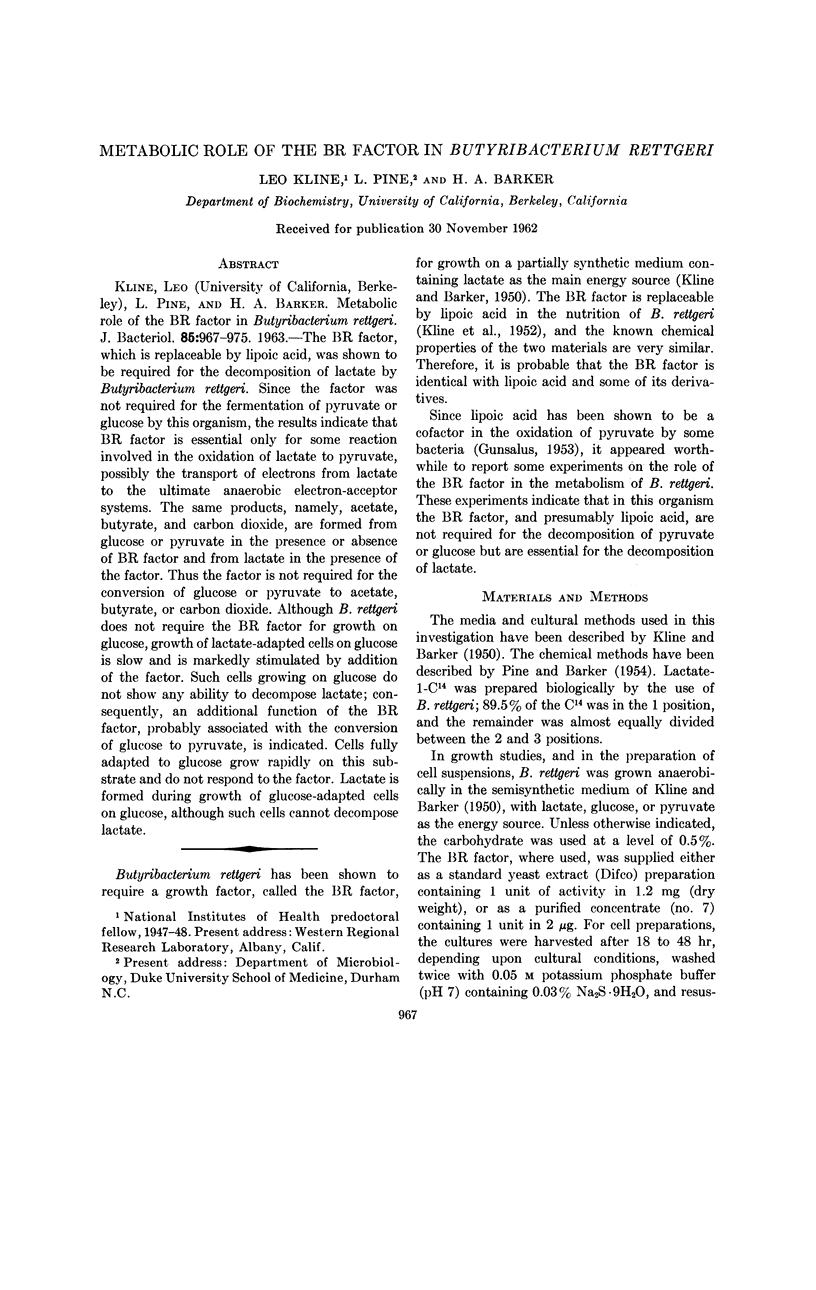
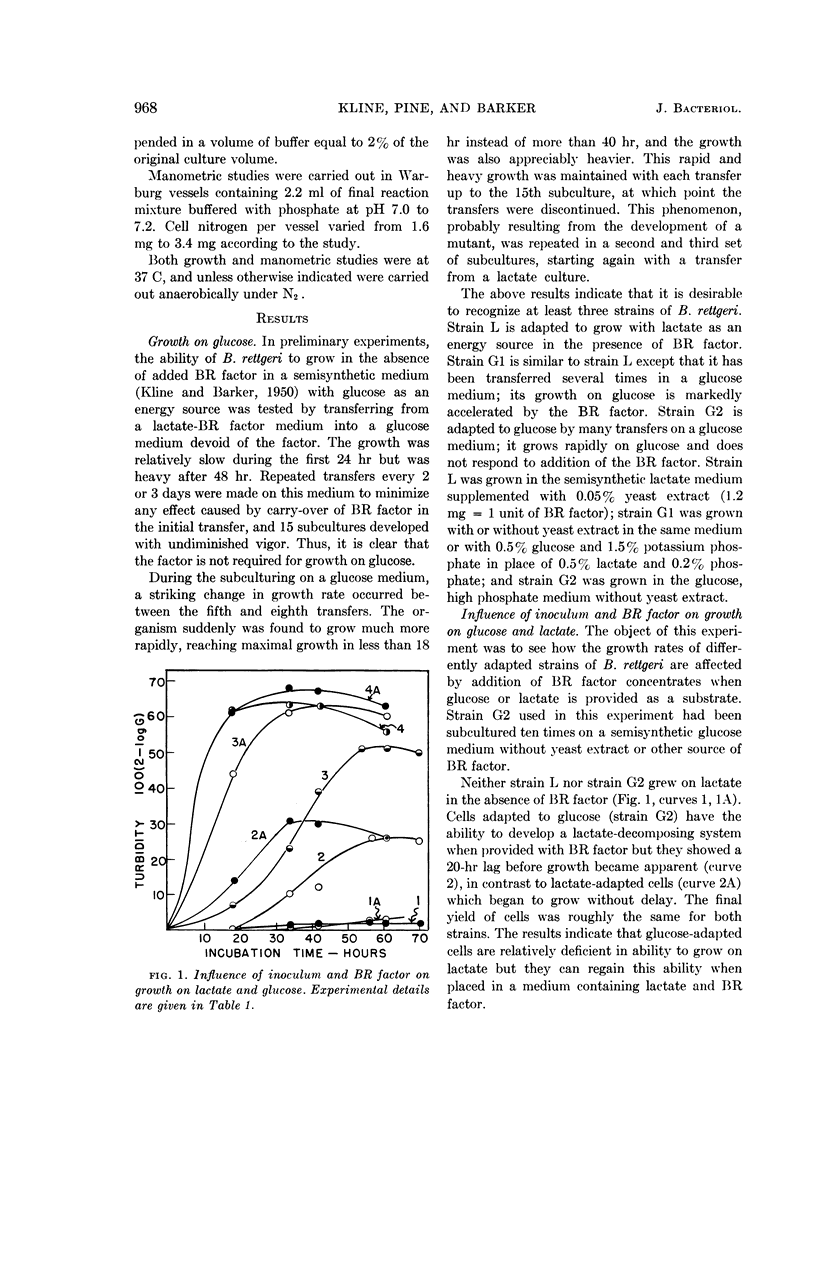
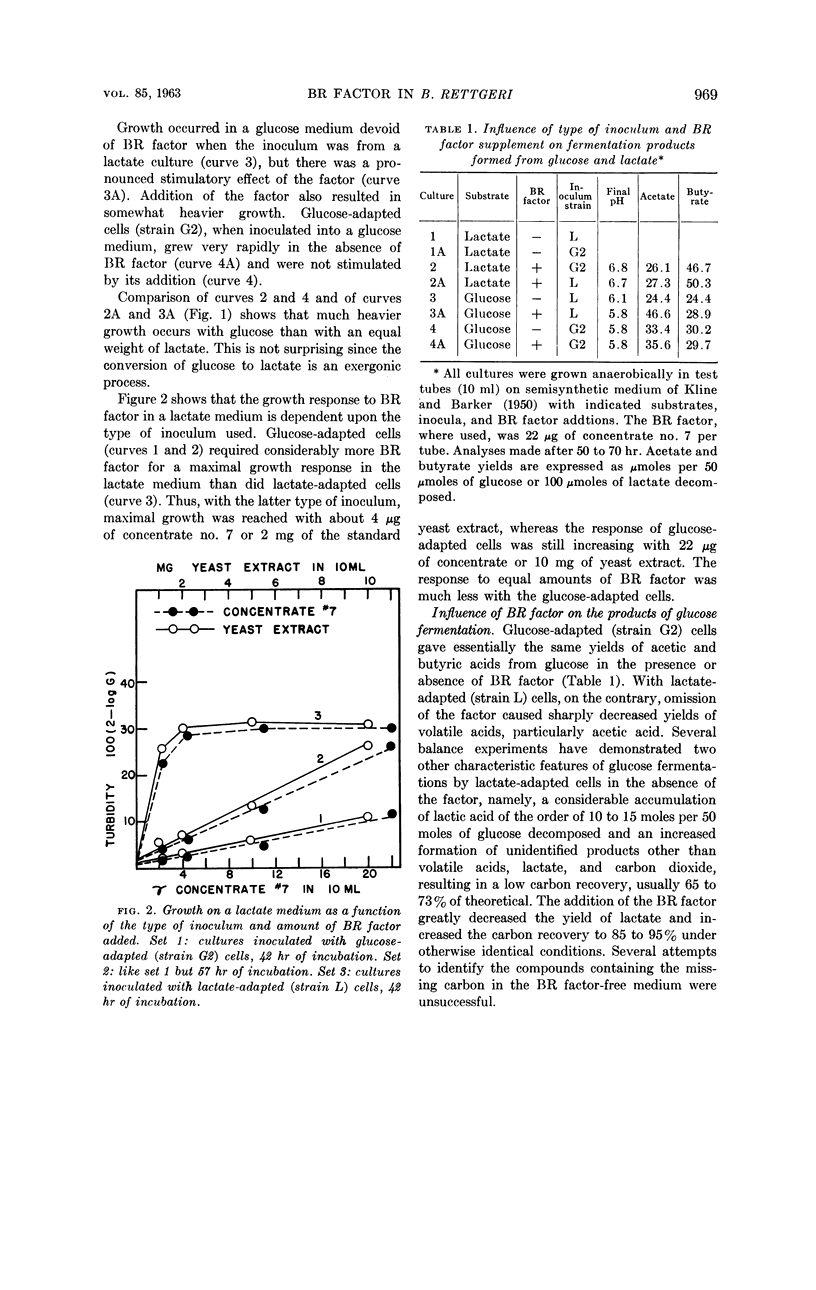
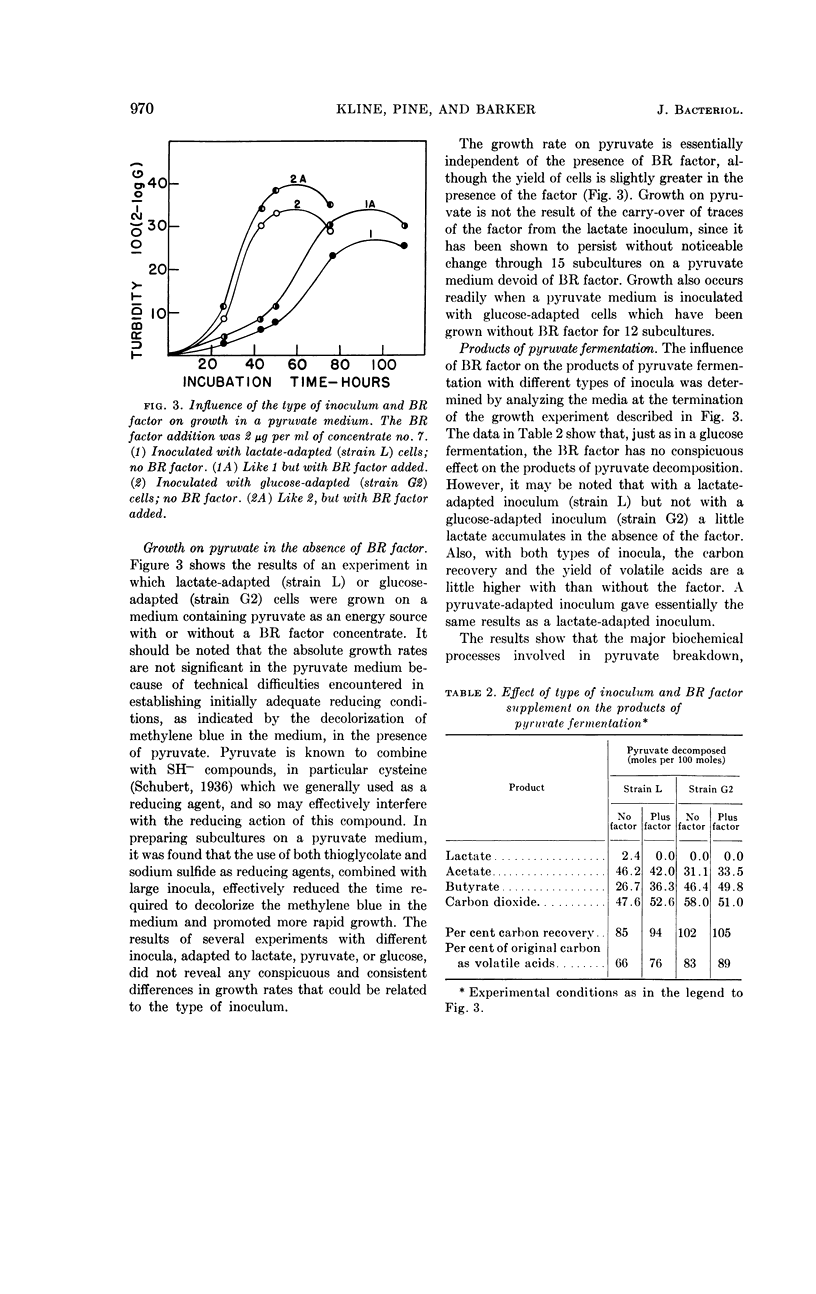
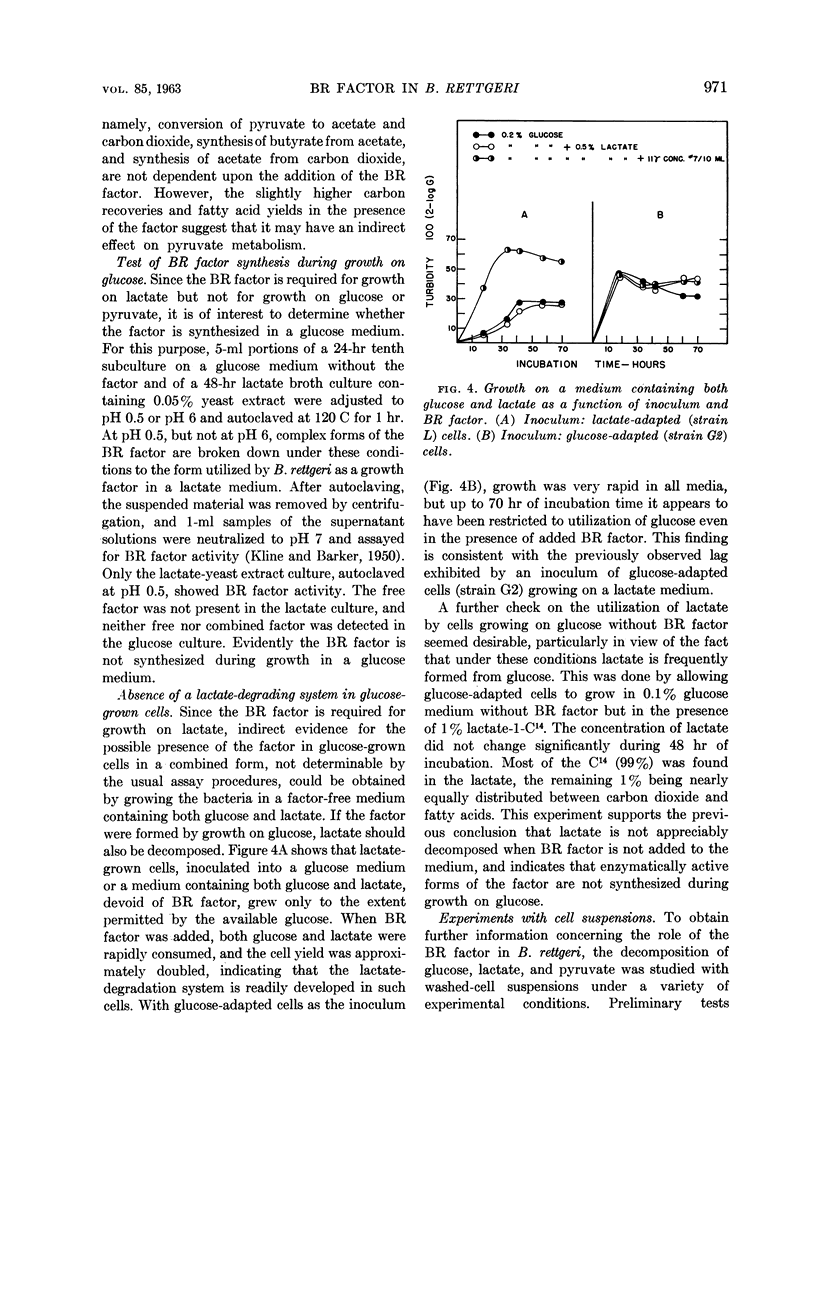
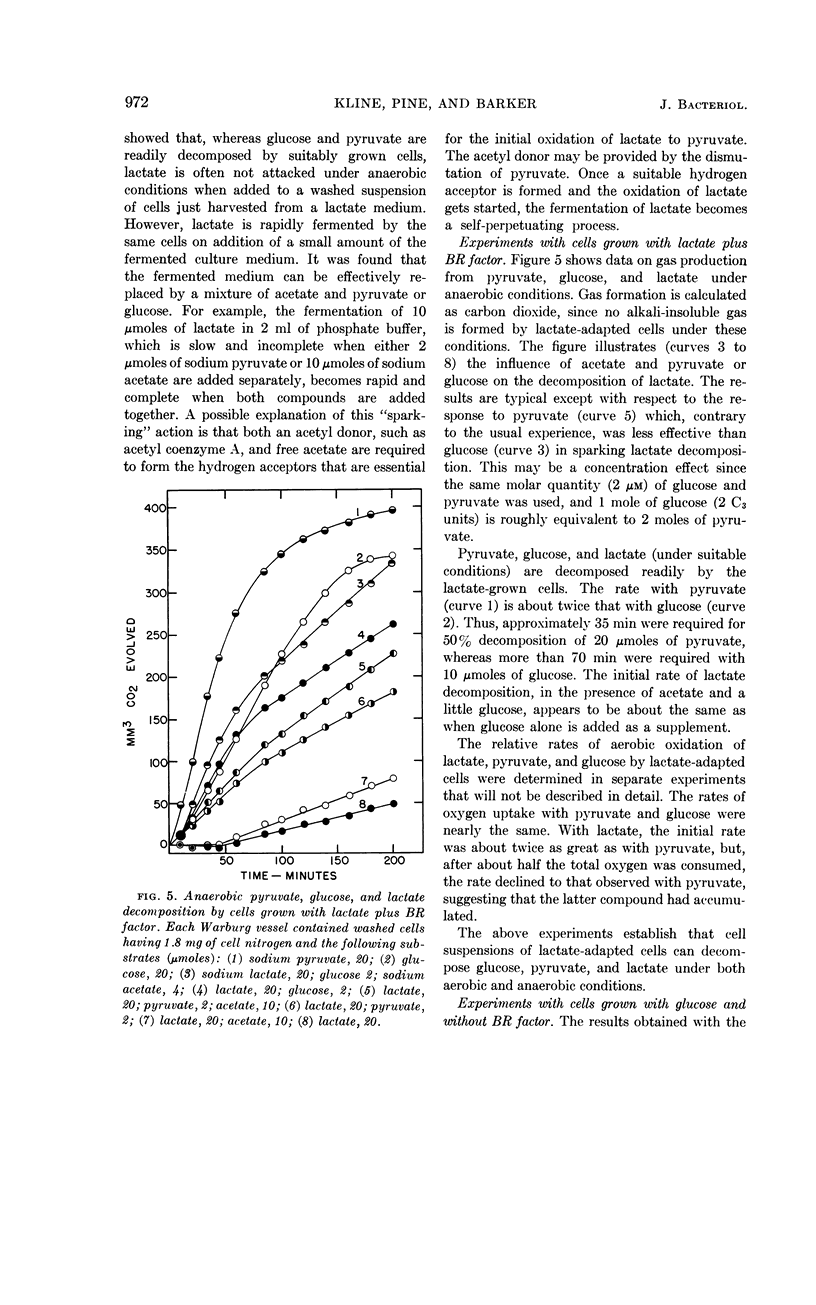

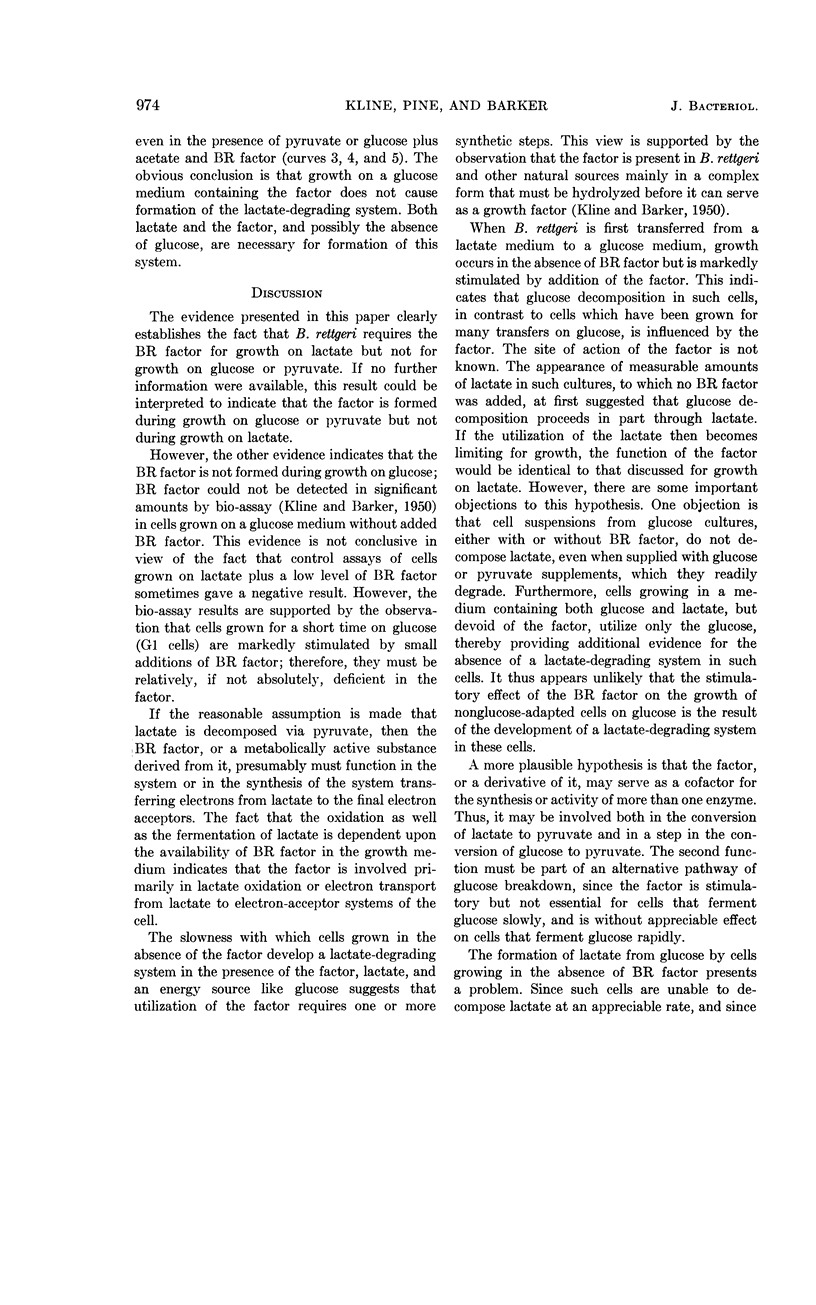
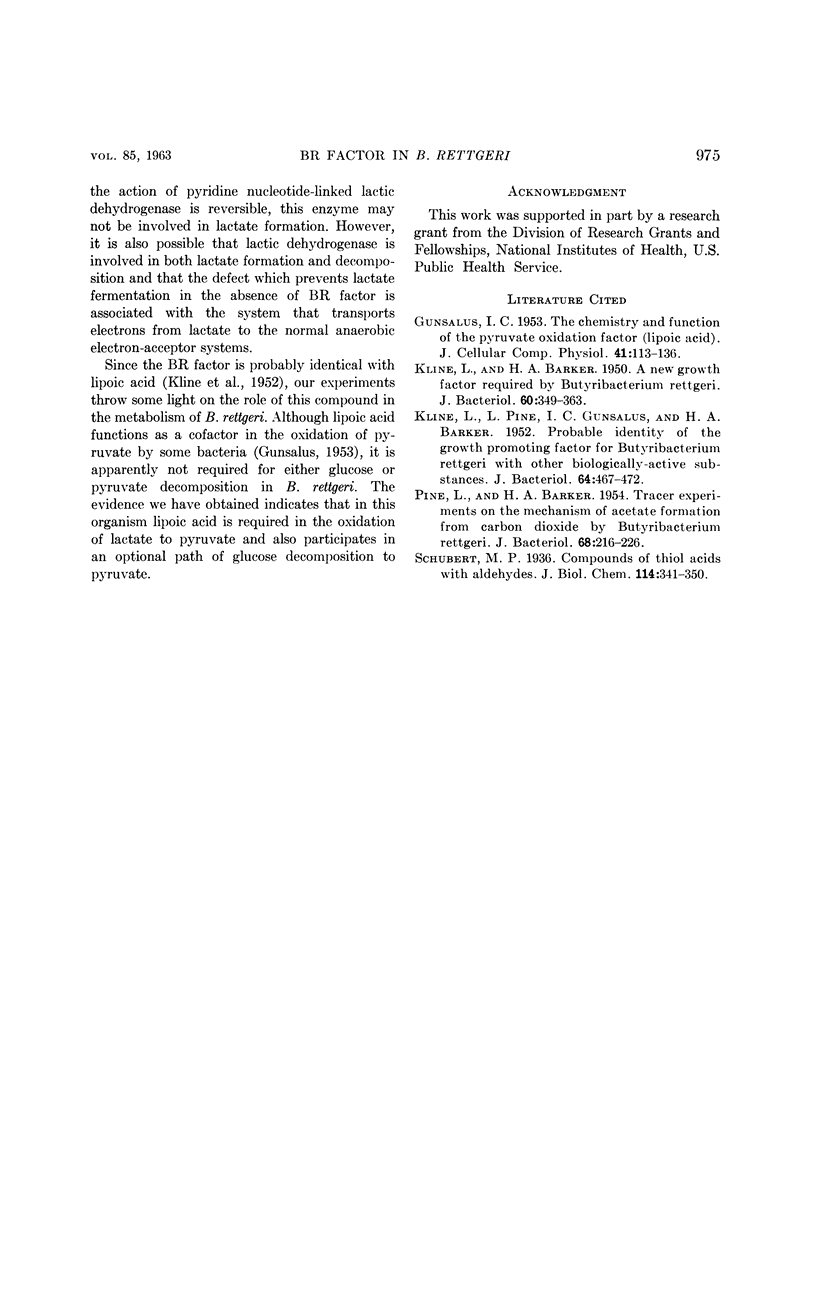
Selected References
These references are in PubMed. This may not be the complete list of references from this article.
- GUNSALUS I. C. The chemistry and function of the pyruvate oxidation factor (lipoic acid). J Cell Physiol Suppl. 1953 Mar;41(Suppl 1):113–136. doi: 10.1002/jcp.1030410409. [DOI] [PubMed] [Google Scholar]
- KLINE L., BARKER H. A. A new growth factor required by Butyribacterium rettgeri. J Bacteriol. 1950 Sep;60(3):349–363. doi: 10.1128/jb.60.3.349-363.1950. [DOI] [PMC free article] [PubMed] [Google Scholar]
- KLINE L., PINE L., GUNSALUS I. C., BARKER H. A. Probable identity of the growth promoting factor for Butyribacterium rettgeri with other biologically-active substances. J Bacteriol. 1952 Oct;64(4):467–472. doi: 10.1128/jb.64.4.467-472.1952. [DOI] [PMC free article] [PubMed] [Google Scholar]
- PINE L., BARKER H. A. Tracer experiments on the mechanism of acetate formation from carbon dioxide by Butyribacterium rettgeri. J Bacteriol. 1954 Aug;68(2):216–226. doi: 10.1128/jb.68.2.216-226.1954. [DOI] [PMC free article] [PubMed] [Google Scholar]


